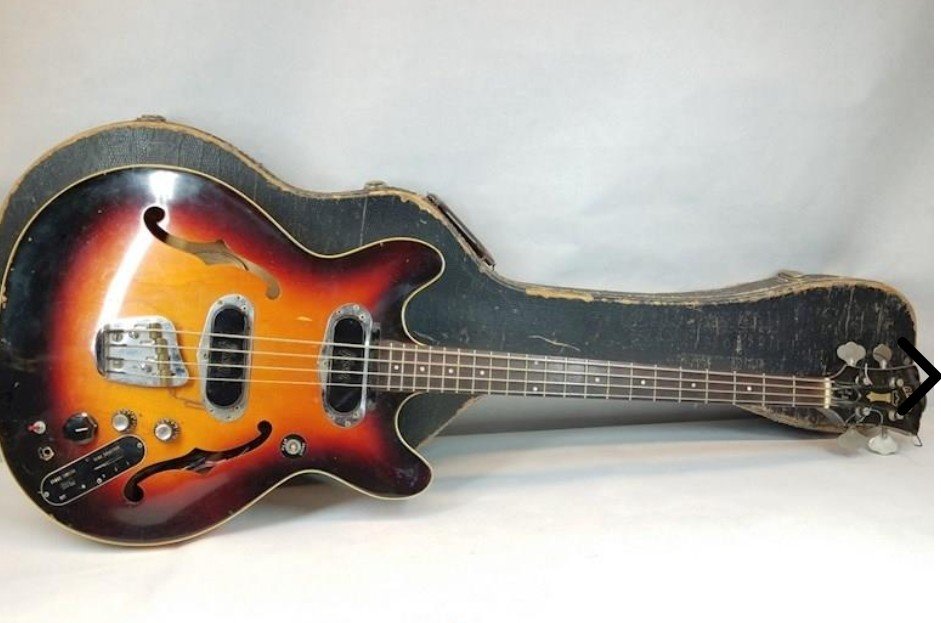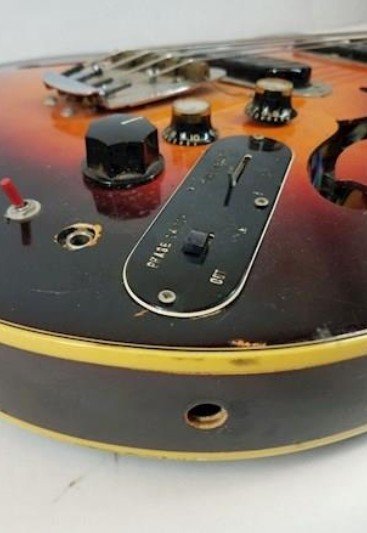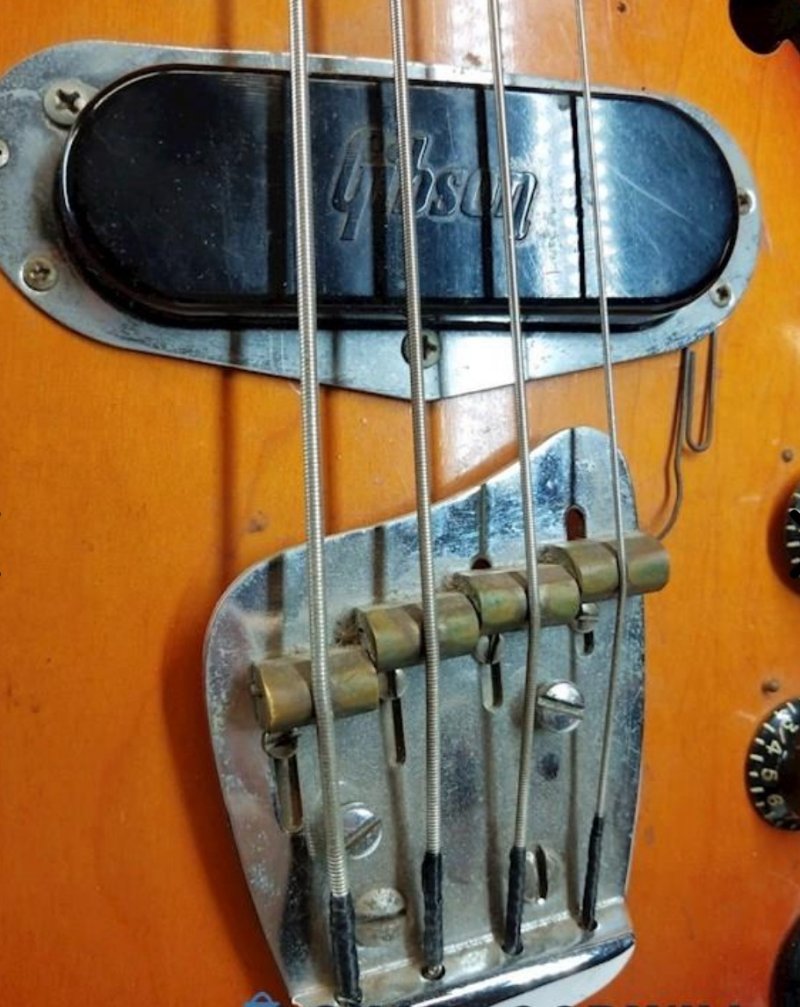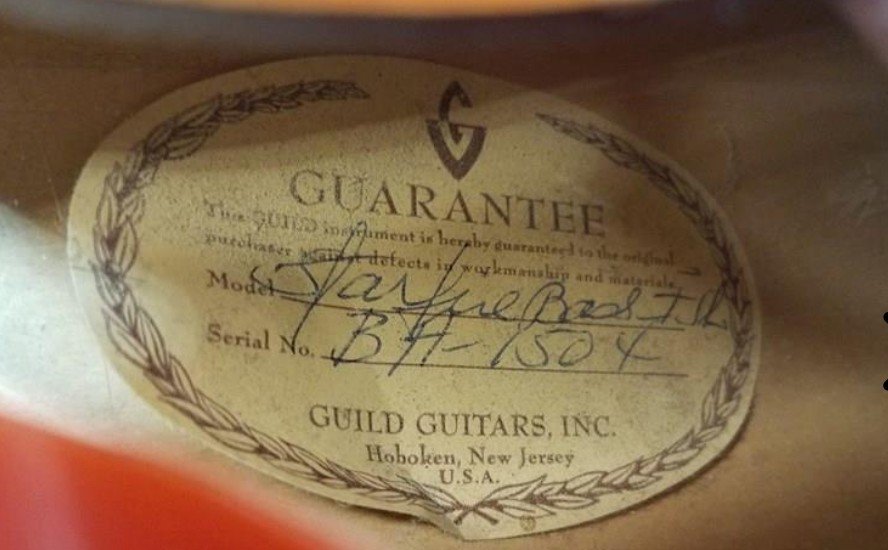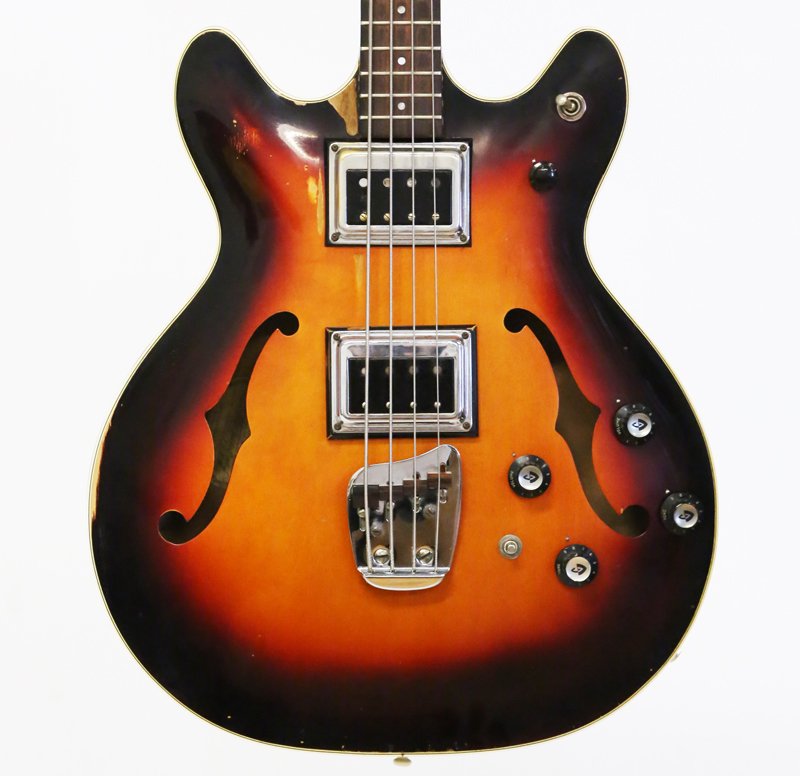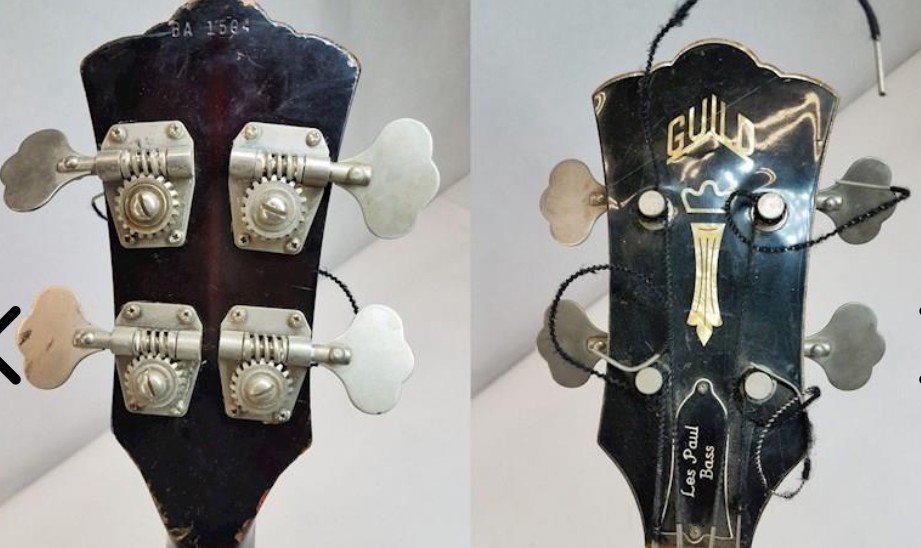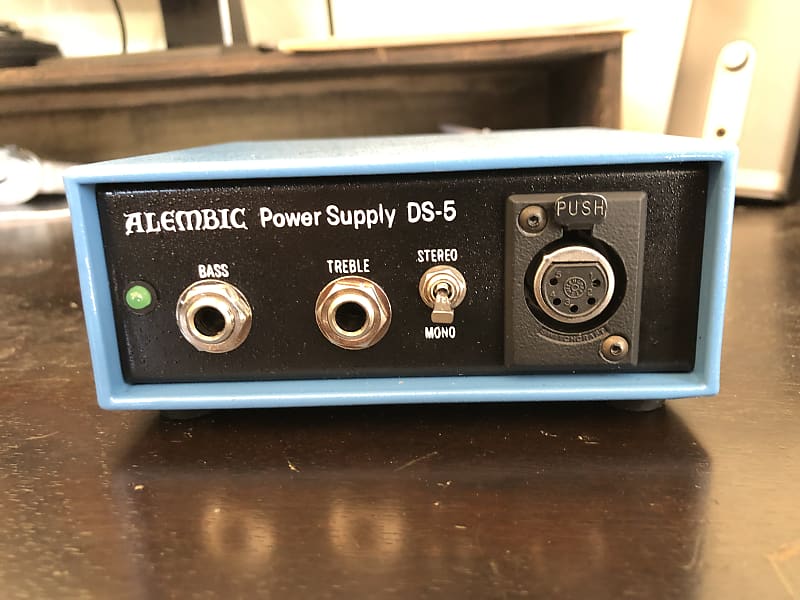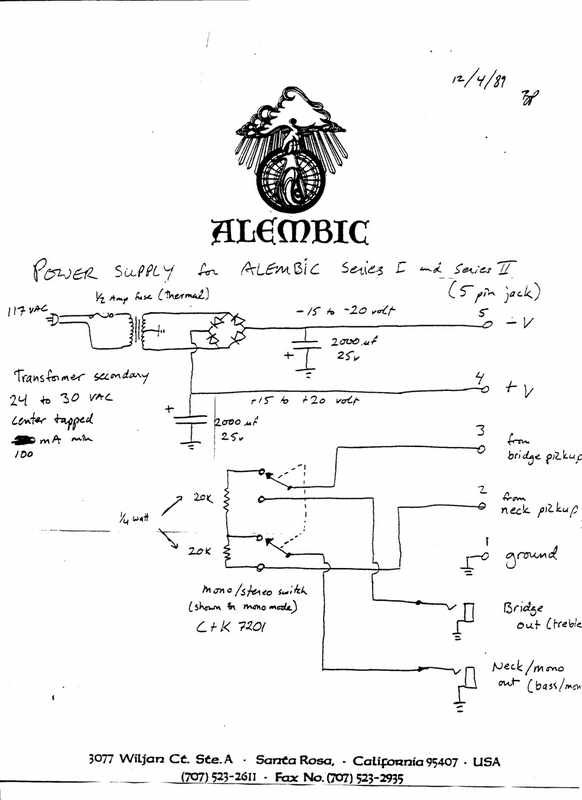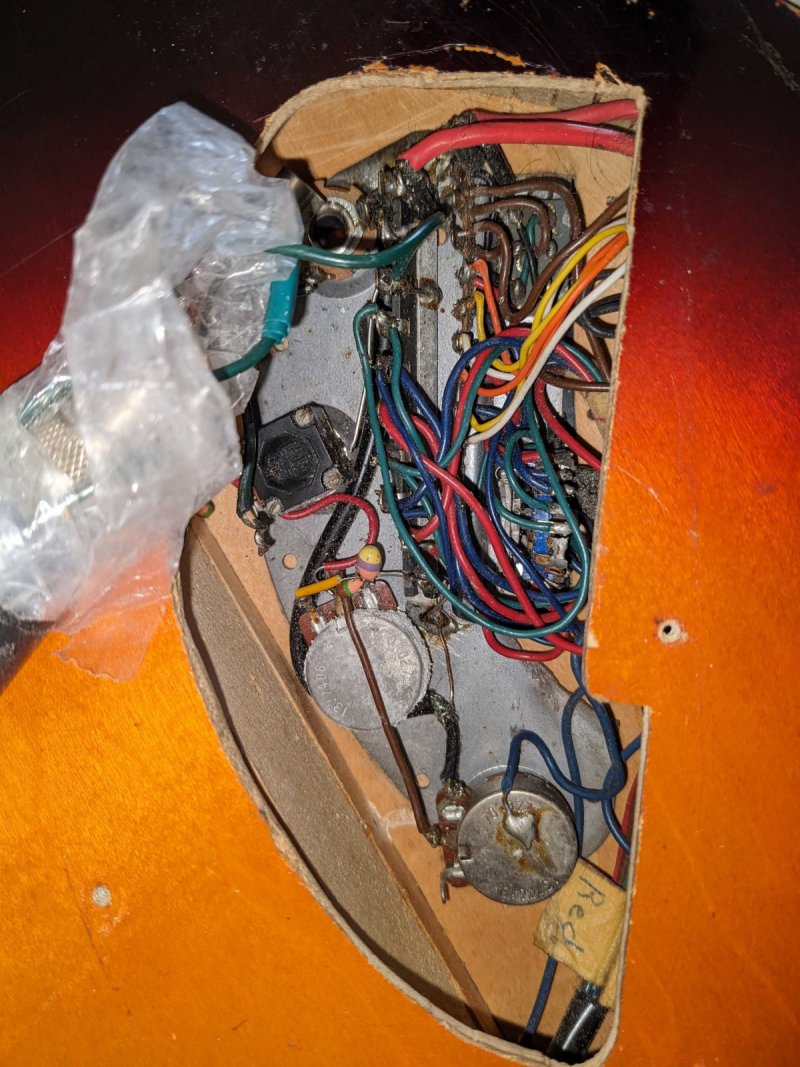Unless they installed some kind of step-up transformer or hidden active preamp inside the bass, yes, you would need a line transformer or preamp of some kind.
For anyone interested in one of these Gibsons, I would recommend the Triumph bass over the Recording bass. The Triumph is sometimes misidentified as a Recording bass, but they're easily differentiated by their control plates. The Recording bass has a few knobs mounted right through the wood along with the smaller Tylenol shaped plate that we see on this Starfire. The Triumph has a big plate with all controls mounted directly on it. Since the Triumph is plug-and-play without requiring any special cable, it's just far more practical. Also, even if you had a functional original cable to go with the Recording bass, cables are flexible and won't protect those delicate electronics in there nearly as well as the wood control cavity of the Triumph bass. Once the Recording bass cable inevitably breaks/fails, as all cables seem to do eventually with use, good luck finding a replacement! More likely you'll have to find an electronics repair service that's willing to take on the repair job nbd then cross your fingers that they know what they're doing! I'm also unsure just how unique the specs of the necessary transformers are. I suppose it's possible there's an aftermarket tranny available that might work as a replacement, even if they're not spot-on exact specs, but who knows.
In comparison, you could say these electronics are similar to some of the earliest pre-Alembic modifications done for Jack and Phil, in the sense that once the pickups were re-wound to low impedance, they were paired with tiny step-up transformers, affectionately referred to by Phil as "spider sex" transformers (if I recall correctly) because apparently they resembled little spiders. Those just result in a useable output signal volume that doesn't require an active power supply, assuming my understanding and the accounts I've read are accurate. I'm pretty sure any and all actual Alembic instruments were required active power, though there's certainly the possibility I'm unaware of a rare passive exception.
